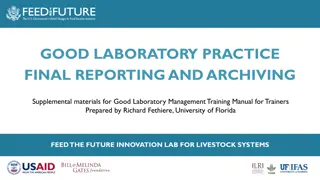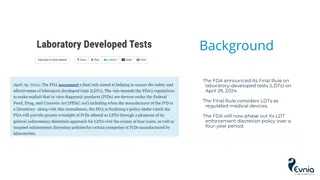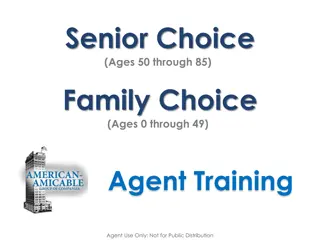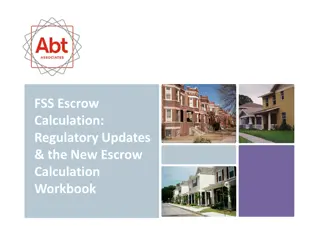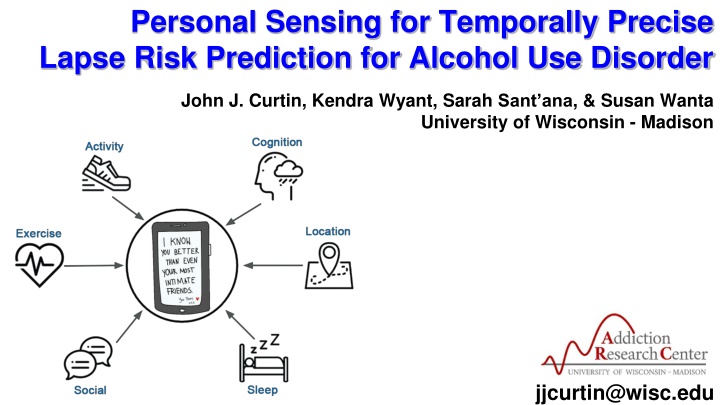
Addressing Mental Healthcare Disparities and Treatment Barriers with Digital Therapeutics
Explore the high and unmet mental healthcare needs in the US, including disparities in treatment access and barriers faced. Discover how Digital Therapeutics (DTx) like smartphone apps can augment mental health services to provide scalable, affordable, and effective solutions.
Download Presentation

Please find below an Image/Link to download the presentation.
The content on the website is provided AS IS for your information and personal use only. It may not be sold, licensed, or shared on other websites without obtaining consent from the author. If you encounter any issues during the download, it is possible that the publisher has removed the file from their server.
You are allowed to download the files provided on this website for personal or commercial use, subject to the condition that they are used lawfully. All files are the property of their respective owners.
The content on the website is provided AS IS for your information and personal use only. It may not be sold, licensed, or shared on other websites without obtaining consent from the author.
E N D
Presentation Transcript
Personal Sensing for Temporally Precise Lapse Risk Prediction for Alcohol Use Disorder John J. Curtin, Kendra Wyant, Sarah Sant ana, & Susan Wanta University of Wisconsin - Madison jjcurtin@wisc.edu
Mental Healthcare Needs are High and Unmet In 2019, 52 million Americans had an active mental illness More than half did not receive any treatment 20 million adults had an active substance use disorder 9 out of 10 did not receive any treatment
Mental Healthcare Needs are High and Unmet In 2019, 52 million Americans had an active mental illness More than half did not receive any treatment 20 million adults had an active substance use disorder 9 out of 10 did not receive any treatment Large treatment disparities exist by race, ethnicity, geography, and income
Mental Healthcare Needs are High and Unmet In 2019, 52 million Americans had an active mental illness More than half did not receive any treatment 20 million adults had an active substance use disorder 9 out of 10 did not receive any treatment Large treatment disparities exist by race, ethnicity, geography, and income Failure to treat is not surprising given many treatment barriers: Access Availability Affordability Acceptability
Digital Therapeutics (DTx) Digital therapeutics are smartphone "apps" that are designed to prevent, manage, or treat disease, including mental illness. Can augment mental health services to address barriers Accessible everywhere Available 24/7 Highly scalable (affordable?)
Digital Therapeutics (DTx) Digital therapeutics are smartphone "apps" that are designed to prevent, manage, or treat disease, including mental illness. Can augment mental health services to address barriers Accessible everywhere Available 24/7 Highly scalable (affordable?) Effective!
Smart Digital Therapeutics Could you predict not only who might be at greatest risk for relapse but precisely when that relapse might occur and how best to intervene to prevent it?"
Lapse Prediction in Patients with Alcohol Use Disorder 151 patients with AUD Early in recovery (1-8 weeks) Committed to abstinence throughout study period Followed for up to 3 months Collected active and passive personal sensing data streams GOAL: Develop a temporally precise lapse monitoring (prediction) system for patients with AUD J. Curtin (PI) D. Gustafson (Co-I) X. Zhu (Co-I)
Personal Sensing Data Streams 4X daily ecological momentary assessments (EMA) Monthly self-report Geolocation (GPS) Cellular communications (voice and text messages) Meta data Text message content Sleep sensor (Wake/sleep times; sleep efficiency; wakings; restlessness)
4x Daily Ecological Momentary Assessments Current Craving Affect Risky situations Stressful events Pleasant events Future Risky situations Stressful events Confidence
Feature Engineering Features based on recent past experiences (12, 24, 48, 72, 168 hours) Min, max, and median response (all items) History (count) of past lapses (item 1) and completed EMAs (compliance) Raw scores and change scores (from baseline/all past responses)
Machine Learning Methods Predict hour-by-hour probability of future lapse Lapse window widths 1 hour 1 day 1 week
Machine Learning Methods Statistical Algorithms ElasticNet GLM (e.g., LASSO, ridge regression) Random Forest XGBoost KNN Model Tuning and Performance Evaluation Area under ROC curve (AUC) as primary performance metric Sensitivity, Specificity, Balanced accuracy, Positive predictive value Using grouped (by participant) 10-fold CV
1 Week: Probabilities for No Lapse and Lapse Model predicts probability of lapse in next week for new observations in test set Can panel predictions for GROUND TRUTH lapse and no lapse observations Want high probabilities to be high for true lapses and low for true no lapses
1 Week: Probabilities for No Lapse and Lapse Model predicts probability of lapse in next week for new observations Can panel predictions for GROUND TRUTH lapse and no lapse observations Want high probabilities to be high for true lapses and low for true no lapses Need decision threshold for classification (.50 default)
Performance Metrics by Lapse Window Width 1 week 1 day 1 hour AUC Sensitivity 0.79 Specificity 0.86 Balanced accuracy 0.82
1 Week: ROC Curve Area under the ROC curve (AUC) Across all decision thresholds ~.5 (random) 1.0 (perfect) AUC = .90 Coarse rules of thumb for AUC .70 - .80 are considered fair .80 - .90 are considered good > .90 are considered excellent
1 Week: Features Small number of features are important 8 EMA items Past lapses (item 1) Craving (item 2) Risky situation (item 3) Stressful events (item 4) Pleasant events (item 5) Affective arousal (item 7) Expected future risky situation (item 8) expected future drinking (item 10) EMA compliance Counts, median, mins and maxes are useful Both raw score (_raw) and change from baseline (_chng) are useful
1 Day: ROC Curve Coarse rules of thumb .70 - .80 are considered fair .80 - .90 are considered good > .90 are considered excellent
1 Day: ROC Curve AUC = .90 AUC = .91 Coarse rules of thumb .70 - .80 are considered fair .80 - .90 are considered good > .90 are considered excellent
Performance Metrics by Lapse Window Width 1 week 1 day 1 hour AUC 0.90 0.91 Sensitivity 0.79 0.81 Specificity 0.86 0.86 Balanced accuracy 0.82 0.83
1 Day: Features Similar (fewer unique?) EMA items Day emerges as new feature (Saturday)
1 Hour: ROC Curve Coarse rules of thumb .70 - .80 are considered fair .80 - .90 are considered good > .90 are considered excellent
1 Hour: ROC Curve AUC = .90 AUC = .91 AUC = .93 Coarse rules of thumb .70 - .80 are considered fair .80 - .90 are considered good > .90 are considered excellent
Performance Metrics by Lapse Window Width 1 week 1 day 1 hour AUC 0.90 0.91 0.93 Sensitivity 0.79 0.81 0.84 Specificity 0.86 0.86 0.87 Balanced accuracy 0.82 0.83 0.86
1 Hour: Features Past reports from previous 0 168 hours are still useful Still fewer unique EMA items Day still matters Hour matters (evening/5pm midnight vs. other)
Positive Predictive Value (PPV) 1 week 1 day 1 hour AUC 0.90 0.91 0.93 Sensitivity 0.79 0.81 0.84 Specificity 0.86 0.86 0.87 Balanced accuracy 0.82 0.83 0.86 PPV
Positive Predictive Value (PPV) 1 week 1 day 1 hour AUC 0.90 0.91 0.93 Sensitivity 0.79 0.81 0.84 Specificity 0.86 0.86 0.87 Balanced accuracy 0.82 0.83 0.86 PPV % Lapse: 25.4% % Lapse: 7.7% % Lapse: 0.4%
Positive Predictive Value (PPV) 1 week 1 day 1 hour AUC 0.90 0.91 0.93 Sensitivity 0.79 0.81 0.84 Specificity 0.86 0.86 0.87 Balanced accuracy 0.82 0.83 0.86 PPV 0.65 0.32 0.02 % Lapse: 25.4% % Lapse: 7.7% % Lapse: 0.4%
Impact of Decision Thresholds on Performance: 1 day Threshold = .50 0.81 0.86 Sensitivity Specificity PPV 0.32
Impact of Thresholds on Performance: 1 day Threshold = .50 0.81 0.86 Threshold = .90 0.40 0.99 Sensitivity Specificity PPV 0.32 0.83
Key Take Home Messages Relatively high combined sensitivity and specificity Comparable performance (AUC) from 1 week down to 1 hour windows Will need to adjust decision thresholds to fit how we use the algorithm. Lower PPV OK for low burden or low cost recommendations Higher PPV needed to recommend costly interventions or actions
(Selective) Next Steps GPS and other passively sensed signals
(Selective) Next Steps GPS and other passively sensed signals Build models with lead times > 0 hours
(Selective) Next Steps GPS and other passively sensed signals Build models with lead times > 0 hours More diversity in training data
(Selective) Next Steps GPS and other passively sensed signals Build models with lead times > 0 hours More diversity in training data Use models to improve DTx engagement and clinical outcomes Clinician-guided real-time use of DTx based on lapse probability and features How to craft patient feedback to encourage trust in the algorithm
CRediTs This research is highly collaborative and requires many hands. Kendra Wyant (doctoral student): Sarah Sant ana (doctoral student): Gaylen Fronk (doctoral student): data curation, conceptualization, formal analysis, software data curation, conceptualization conceptualization John Curtin (faculty): David Gustafson (faculty): X. Zhu (faculty): conceptualization, formal analysis, funding acquisition, methodology, software, supervision conceptualization conceptualization, methodology Candace Lightheart (staff) Susan Wanta (staff) Megan Schultz (staff) Jill Nagler (staff) Kerry Keiser (staff) Chris Gioia (staff) data curation, investigation, supervision project administration, software investigation, data curation investigation investigation clinical supervision http://go.wisc.edu/arc jjcurtin@wisc.edu
1 Week: Confusion Matrix and Performance Metrics Sensitivity = 0.79 Specificity = 0.86 TN FN Balanced accuracy = .82 TP FP Decision threshold = .50
1 Day: Confusion Matrix and Performance Metrics Sensitivity = 0.81 Specificity = 0.86 FN TN Balanced accuracy = .83 FP TP Decision threshold = .50
1 Hour: Confusion Matrix and Performance Metrics Sensitivity = 0.84 Specificity = 0.87 FN TN Balanced accuracy = .86 FP TP Decision threshold = .50

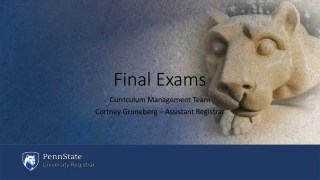
![READ⚡[PDF]✔ Yup I'm Dead...Now What? The Deluxe Edition: A Guide to My Life Info](/thumb/20463/read-pdf-yup-i-m-dead-now-what-the-deluxe-edition-a-guide-to-my-life-info.jpg)



